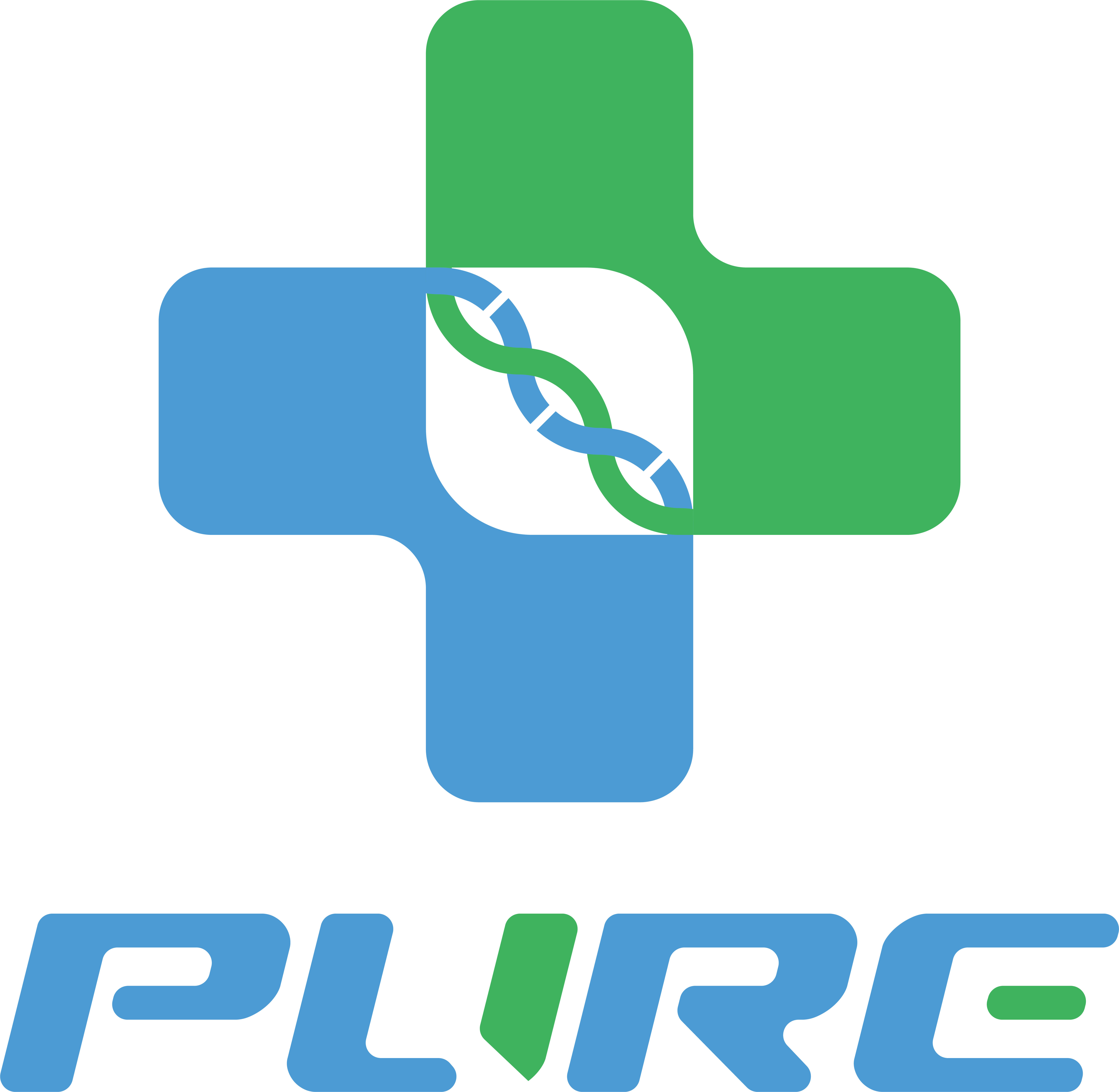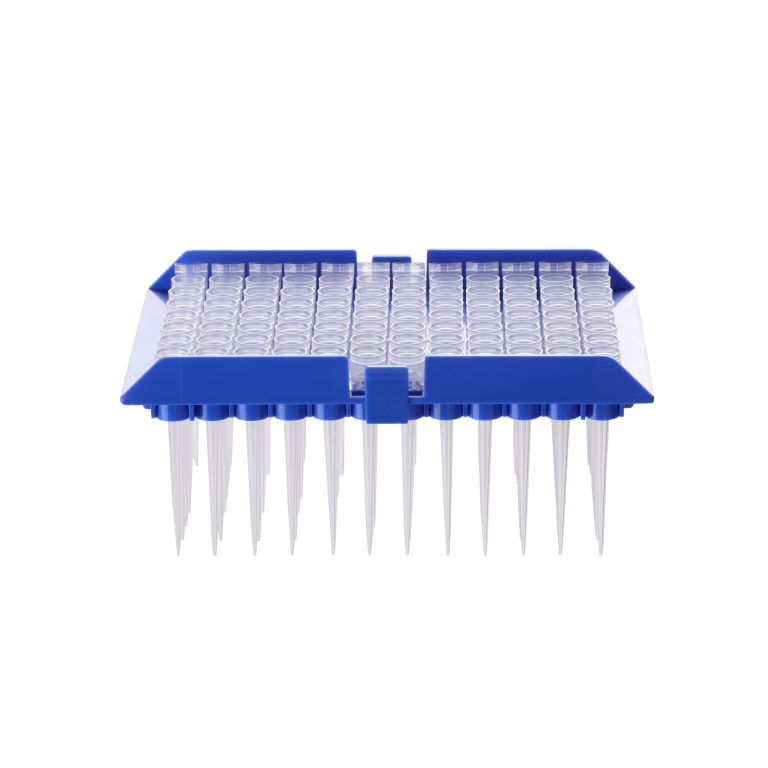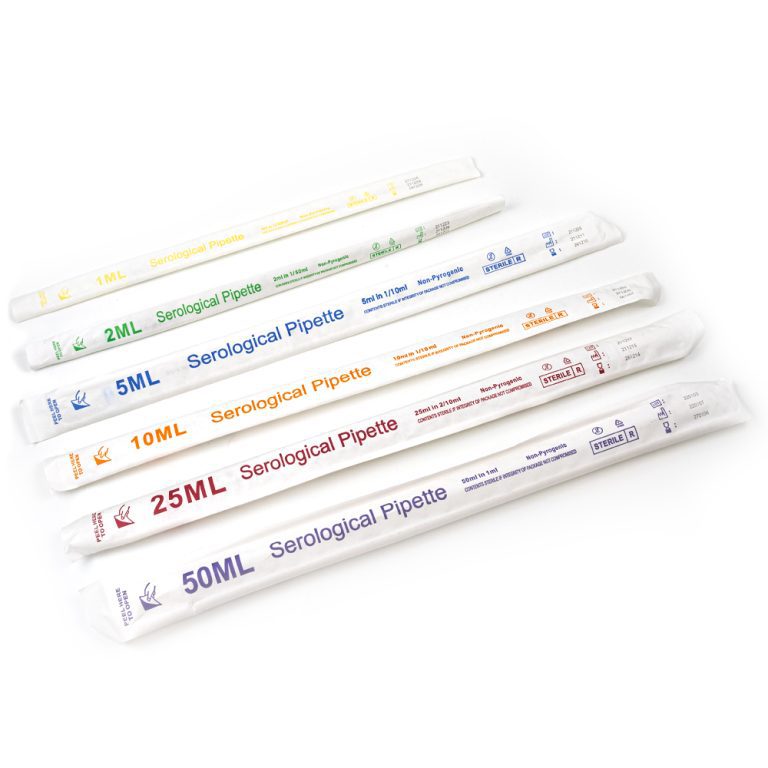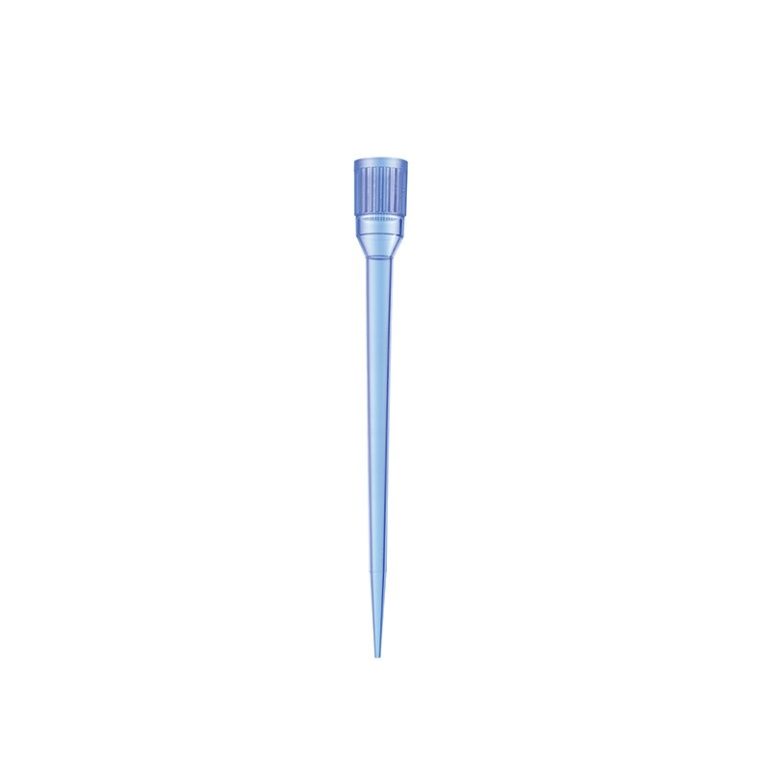Here are some common use cases and applications of glass serological measuring pipettes with graduations:
– Routine liquid transfer – Used to accurately measure and transfer larger volumes (1-100 ml) of aqueous solutions, buffers, media, etc. Graduations allow visual confirmation of the volume transferred.
– Serial dilutions – Prepare serial dilutions of samples, reagents, or solutions by sequentially transferring precise volumes with a serological pipette.
– Cell culture – Useful for making media changes, splitting, and passaging adherent cell cultures by aspirating and dispensing required volumes.
– Reagent preparation – Measure reagents for experiments that call for specific volumes at certain concentrations or ratios. Graduations assist in volume check.
– Microbiology – Aseptically dispense media, buffers, or samples for microbial culture work. Can use cotton-plugged pipettes to maintain sterility.
– Titrations – Graduated serological pipettes allow step-wise additions of titrant for acid-base titrations or other quantitative chemical analyses.
– Sample aliquoting – Dispense equal volumes of a sample into multiple tubes for storage or distribution. Graduations enable accuracy.
– Blood work – Transferring defined volumes of blood or plasma between tubes/vials can be done with serological pipettes.
– Inventory management – Measure and record the volumes of liquids like solvents, buffers, and reagents remaining in stock bottles.
– Quality control – Use pipettes to regularly dispense defined volumes as a QC test for equipment like liquid handlers.
So in summary, graduated serological pipettes are simple but versatile manual liquid handling tools essential for many laboratory workflows involving volumes over 1 ml.



